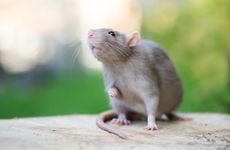
NEW YORK – Natural selection may have lead to alterations in the abundance of olfactory sensory neurons that enable mammals to detect certain key scents, according to a new study.
The sense of smell in mammals is powered by olfactory receptors that are expressed by olfactory sensory neurons, which are themselves found throughout the olfactory mucosa of the nose. The receptors determine the odorant response profiles of the olfactory sensory neurons, of which there are hundreds to thousands of subtypes.
In their new study, researchers led by Darren Logan of the Wellcome Sanger Institute and Luis Saraiva of Sidra Medicine in Qatar profiled the transcriptomes of whole olfactory mucosa from six mammals encompassing about 95 million years of evolution. As they reported today in Science Advances, the researchers found that while the expression of olfactory genes is broadly conserved across species, they noted that the abundance of some olfactory sensory neurons (OSNs) varied by species.
"We hypothesize that OSN subtypes that are more abundant in each species may be the consequence of selection for the sensitive detection of ecologically meaningful odorants for that species," Logan and colleagues wrote in their paper.
The researchers performed RNA sequencing on olfactory mucosa samples from dogs, mice, rats, marmosets, macaques, and humans and focused their analysis on 9,725 genes that are orthologous across the six species, share more than 40 percent amino acid identity with the human version, and were expressed in the replicates analyzed.
When they analyzed gene markers for mature OSNs, immature OSNs, and other cell types, the researchers noted that the cells are all highly expressed across all the species, though they noted some difference in abundance of some cell markers by species.
For instance, they found that all six species expressed members of the TAAR and MS4A chemosensory receptor families, but noted that TAAR5 is the most abundantly expressed one in humans and dogs, while TAAR2 is the most highly expressed in macaque and marmoset. Similarly, MS4A8B is the most abundant in humans, while MS4A7 is the most abundant in marmosets, dogs, and rats.
Additionally, when they analyzed olfactory receptor (OR) gene expression, the researchers found that they are expressed across a large dynamic range among these six species. However, they reported there is only a link between phylogenetic conservation and high OR expression in a few cases.
RNA-seq-based expression estimates, though, suggest that the number of chemosensory genes expressed in the olfactory mucosa is correlated to the number of OSNs that express that receptor, leading to the idea that an increased abundance of a particular OSN subtype leads to an increased sensitivity to its ligand. Under that assumption, the researchers said that highly abundant OSN subtypes could have a role in perceiving odorants with a key ecological function for a particular species, such as in food choice.
Because of that suspicion, they investigated whether OSN subtypes expressing OR from highly conserved gene groups are more likely to have a part in detecting subsets of related odorants or biologically relevant odorants. They put together a list of known OR-ligand pairs in mice and humans to uncover 73 unique odorants that activate mouse or human ORs from nearly two dozen conserved gene groups. These odorants, they noted, help perceive a range of scents, from the cheesy or sweaty odor of carboxylic acids to the fruity or floral smell of ketones. Ten of the 11 conserved gene groups contain ORs that detect molecules that are known odorants of human food.
From their findings, the researchers suggest that the overrepresentation of certain OSN subtypes is an evolutionary phenomenon, though they noted that additional high-throughout studies of ligand activation patterns in mammalian ORs is needed.
